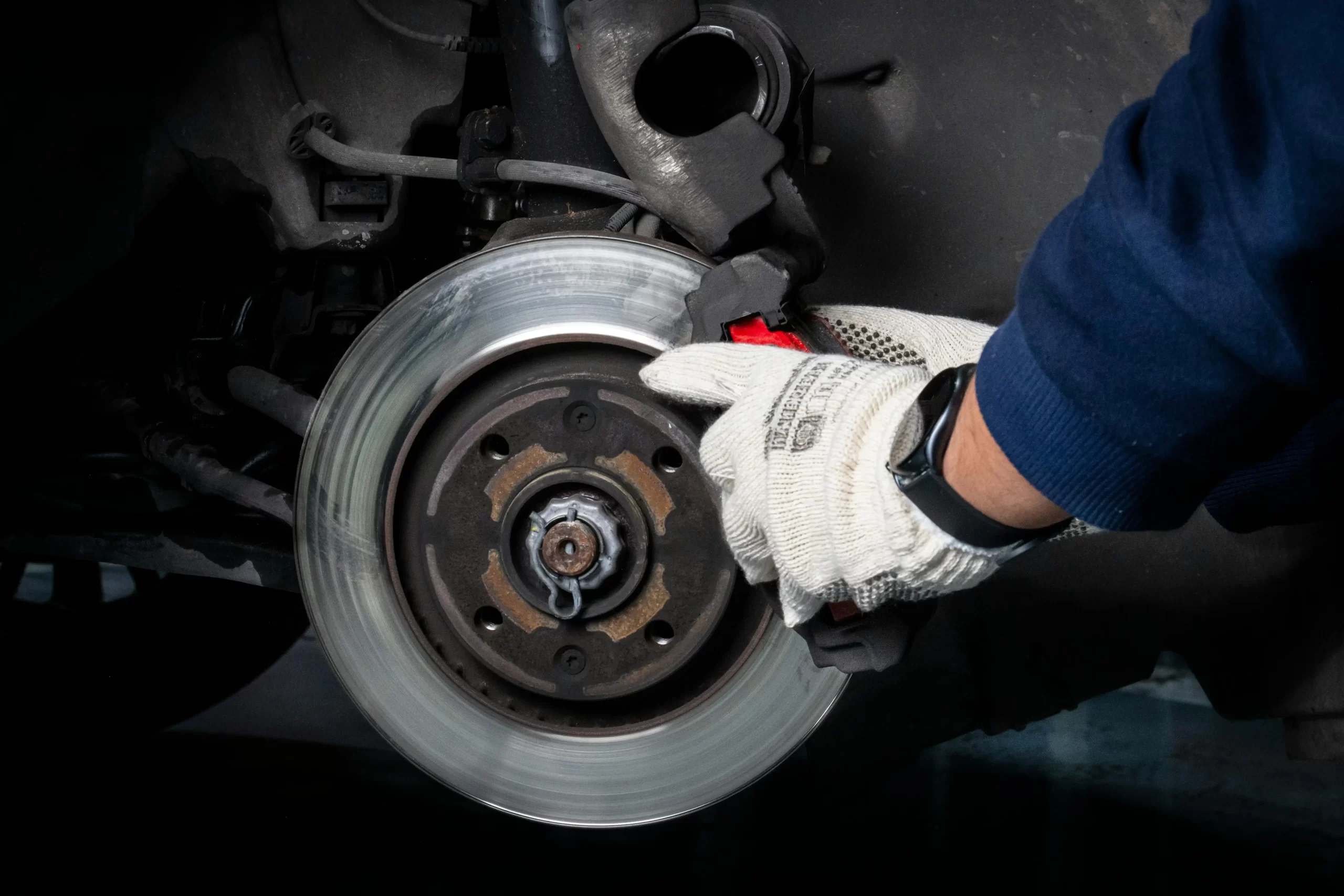
Your vehicle’s braking system is its most critical safety feature. Proper brake maintenance prevents accidents and costly repairs while ensuring optimal performance. This comprehensive guide explains how brakes work, warning signs of wear, and when to replace key components.
Understanding Your Braking System
Modern braking systems consist of:
- Brake pads – Create friction against rotors
- Rotors/discs – Metal discs that pads clamp onto
- Calipers – Hydraulic pistons that press pads against rotors
- Brake fluid – Transfers pedal pressure through the system
When any component wears out, stopping power decreases significantly.
6 Warning Signs You Need Brake Service
1. Unusual Noises
- High-pitched squealing indicates worn brake pads (wear indicators rubbing)
- Metal-on-metal grinding means pads are completely worn and damaging rotors
2. Vibration During Braking
- Pulsing in steering wheel or pedal suggests warped rotors
- Shuddering without ABS activation signals uneven rotor wear
3. Reduced Stopping Power
- Noticeably longer stopping distances
- Often caused by glazed pads or fluid leaks
4. Vehicle Pulling to One Side
- Sticking caliper
- Uneven pad wear
- Hydraulic imbalance in brake lines
5. Dashboard Warning Lights
- ABS or brake warning light illumination
- May indicate low fluid level or sensor issues
6. Visible Wear Indicators
- Pad thickness less than 3mm (1/4 inch)
- Deep grooves, cracks, or severe rust on rotors
Replacement Guidelines for Brake Components
Brake Pads
- Typical lifespan: 30,000-70,000 miles
- Replace when:
- Friction material measures under 3mm
- Uneven wear patterns appear
- Contamination from fluids occurs
Brake Rotors
- Typical lifespan: 50,000-70,000 miles
- Replace when:
- Thickness falls below manufacturer minimum
- Deep scoring exceeds 0.06 inches
- Severe rust or cracking develops
Brake Fluid
- Recommended flush interval: Every 2 years/30,000 miles
- Degraded fluid symptoms:
- Dark, cloudy appearance
- Spongy pedal feel
DIY Brake Inspection Checklist
- Visual inspection – Check pad thickness through wheel spokes
- Auditory check – Listen for unusual braking noises
- Tactile test – Note pedal firmness and vibration
- Performance test – Safe stopping distance evaluation
Professional vs. DIY Brake Service
| Service | Skill Level Required | Notes |
|---|---|---|
| Pad Replacement | Beginner | Basic tools required |
| Rotor Replacement | Intermediate | Torque wrench needed |
| Caliper Service | Advanced | Requires bleeding brakes |
| Fluid Flush | Intermediate | Special tools recommended |
Important: Always replace brake components in axle sets (both front or both rear).
5 Ways to Extend Brake System Life
- Use engine braking downhill instead of riding brakes
- Clean wheels regularly to prevent debris accumulation
- Maintain proper fluid levels and quality
- Address minor issues before they become major repairs
- Invest in quality replacement parts for longevity
Critical Situations Requiring Immediate Attention
- Brake pedal sinks to floor (potential fluid leak)
- Loud metallic bangs during braking (broken component)
- Burning odor (seized caliper)
Final Recommendation: Most vehicles need new pads every 2-3 years and rotors every 3-4 years, though driving habits significantly affect lifespan. Heed warning signs early and maintain your brakes properly – they’re your vehicle’s most important safety system.
Many repair shops offer complimentary brake inspections. Take advantage of these services to catch problems before they become emergencies.






Leave a Reply